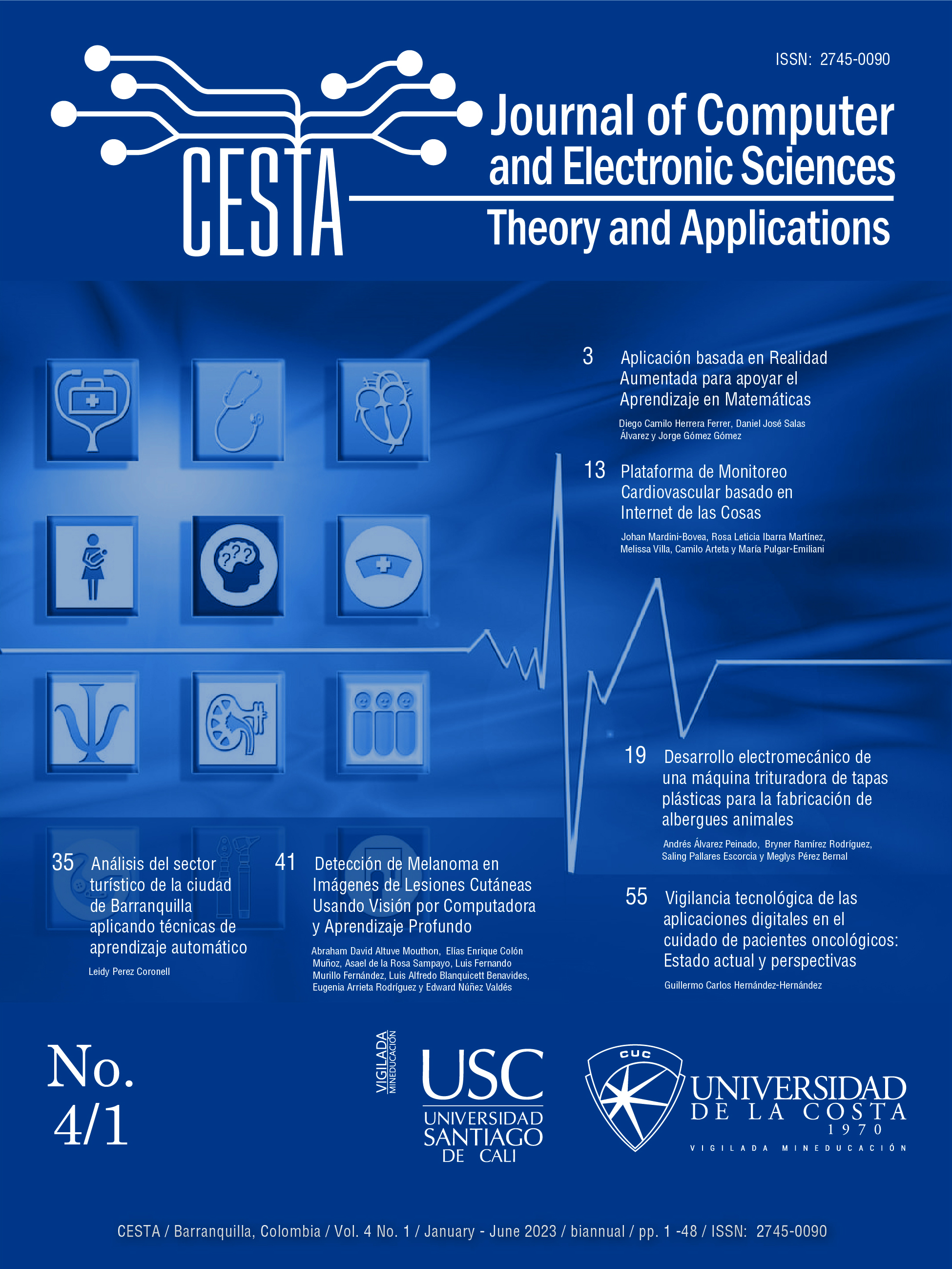Melanoma detection in Images of Skin Lesions using Computer Vision and Deep Learning
DOI:
https://doi.org/10.17981/cesta.04.01.2023.05Keywords:
Deep learning, skin lesions, melanoma, image processing, convolutional neural networksAbstract
Introduction: The problem to be addressed in this work is the detection of melanoma, which is one of the different skin cancers that exist, which has a high mortality rate.
Objective: This document presents a research project in Artificial Intelligence whose objective is the detection of melanoma through image analysis using Deep learning.
Method: Initially, morphological operations are applied to the image to leave only the object of interest. This image is then fed into a convolutional neural network, which has been trained for melanoma detection.
Results: The proposed convolutional network architecture presents acceptable results in the accuracy metric for the identification of malignant or bening melanoma. However, it is proposed to carry out future experiments that can improve these results.
Conclusions: Thanks to Deep Learning techniques with this class of tools, a very powerful and useful system is being offered when it comes to determining the diagnosis of this type of disease.
Downloads
Published
How to Cite
Issue
Section
License
Copyright (c) 2023 Abraham Altuve Mouthon, Elías Colón Muñoz, Asael De la Rosa Sampayo, Luis Murillo Fernández, Luis Blanquicett Benavides, Eugenia Arrieta, Edward Núñez Valdés

This work is licensed under a Creative Commons Attribution-NonCommercial-NoDerivatives 4.0 International License.
Los artículos publicados son de exclusiva responsabilidad de sus autores y no reflejan necesariamente las opiniones del comité editorial.
La Revista CESTA respeta los derechos morales de sus autores, los cuales ceden al comité editorial los derechos patrimoniales del material publicado. A su vez, los autores informan que el presente trabajo es inédito y no ha sido publicado anteriormente.
Todos los artículos están bajo una Licencia Creative Commons Atribución-NoComercial-SinDerivadas 4.0 Internacional.



 English
English
 Español (España)
Español (España)






